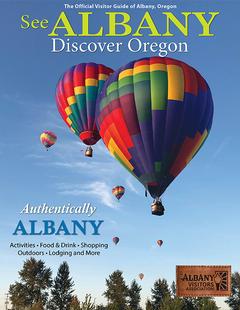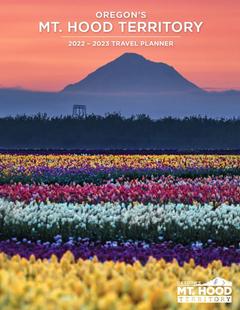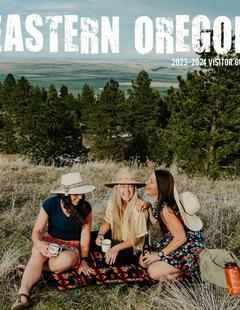Basics
- Location:
- North-central Oregon to northeastern Oregon through many National Forests
- Surface:
- Paved
- Length:
- 286 miles (460 km)
- Time:
- Take 5 hours to drive this byway.
- Season:
- Drivable year round
Description
The Journey Through Time Scenic Byway discovers in several hours what took the Earth millions of years to create. In addition to incredible change in geography, flora, and fauna, there are uncountable remnants and traces left from pioneers, Chinese laborers, and frontiersmen.
The Journey Through Time Scenic Byway starts from Baker City, 300 miles east from Portland. The drive starts west on HWY 7 past Austin, then west on HWY 26 to Mitchell. Go north on HWY 207 to Kimberly, northwest on HWY 19 to Fossil, then west on HWY 218 to Antelope. From Antelope, go north on HWY 97 to I-84 on the Columbia River and the end of the drive.
The story of the Earth is told over every mile along this drive. Ancient seabeds and glacial movement creating wide valleys and fields are just some of the many variations of terrain and time along this route. Untouched beauty is easily accessible to the careful eye and traveler. Hiking is a great way to get to know the land and small towns dot the route where one can get to know the history of the region's people and their way of life.
Tourism Resources
Helpful Links
Tourism Resources
Points of Interest
Points of Interest Along The Way
Baker City Historic District (OR)
Of the 110 buildings in the Historic District, 60 have been restored to their original elegance. Some are now banks, bed and breakfasts, and museums, etc. Restorations are continuing; the tall and white 1927 Baker Hotel, (the site of political conventions,) is being redone at the time of this writing (summer 2000).
Baker City was known as the 'Queen City of the Mines,' and by1900, its population was larger than Boise's (at the time.) An excerpt from the Walking Tour Guide: 'Restaurants in fine hotels served superb cuisine…the opera house was frequently filled to capacity…The 1800 block on the east side of Main had five saloons and several brothels. Children and ladies avoided the block, but the Salvation Army band played there nightly, hoping to rescue fallen souls.'
Baker City/Baker Valley (OR)
Known early on as the "Queen City of the Mines," Baker City sits along the Powder River between the dramatic Elkhorn Ridge of the Blue Mountains and the Wallowa Mountains. Turn-of-the century Victorian architecture dominates the commercial and residential buildings of the city's downtown, earning it distinction as a National Historic District. Many buildings have been carefully restored, including the famous Geiser Grand Hotel.
The Oregon Trail Regional Museum highlights the area's history and houses a fantastic rocks and minerals collection. The Adler House Museum preserves the furnishings and ambiance of an early businessman and community philanthropist. Like the other communities along the Byway, Baker City is friendly and casual.Caution: after spending a couple hours here, you won't want to end your Byway adventure.
John Day Fossil Beds National Monument (OR)
Within the heavily eroded volcanic deposits of the scenic John Day River basin is a well-preserved fossil record of plants and animals. This remarkably complete record, spanning more than 40 of the 65 million years of the Cenozoic Era (the "Age of Mammals and Flowering Plants") is world-renowned.
Authorized October 26, 1974, and established in 1975, this 14,000 acre park is divided into three widely separated units; the Sheep Rock Unit, Painted Hills Unit, and Clarno Unit. The monument's main headquarters is at the visitor center in the Sheep Rock Unit.
Oregon Trail Regional Museum (OR)
Built in 1920, 'The Old Nat' ('Natatorium' is a Latin derivative meaning: 'indoor swimming pool') is on the National Register of Historic Places. This was the area's swimming pool for decades. It is now an interesting museum with a natural history focus.
Sumpter (OR)
Sumpter still looks much like it did in the 1860s, when it was founded during a gold rush; all of the buildings are made of rough-hewn wood. With a population of about 120, this town has a surprising amount of commerce: antique and gift shops, camps where you can pan for gold, a steakhouse, and lodging.
This is where the famous Sumpter Valley Gold Dredge sits, where the Sumpter Valley Railroad runs, and is also known for its hundreds of miles of great snowmobiling.
Sumpter Valley Gold Dredge (OR)
The dredge looks like the ghost of a mammoth and strange boathouse. Built in 1935, the Sumpter Valley Gold Dredge mined $4.5 million in gold until it stopped 11 years later. During those years, the dredge worked 24 hours a day, in all kinds of weather. It only stopped on Christmas and Independence Days.
The dredge has moved 2 miles from the place it was built-dredges work by moving along as they extract gold. The dredge is being restored in stages. Right now, there are wooden walkways to go out to the dredge (it stands in a pond) and a few interpretive signs.There is even a button you can push to hear a recording of a worker telling stories about the dredge over the roar of the machine in operation.
Sumpter Valley Historic Railroad (OR)
This 10 mile (roundtrip) railroad trek takes you from Sumpter to McEwen and back. This line started in 1890 to haul logs to a new sawmill. It soon expanded to carry passengers to Baker City. The line's length eventually reached 80 miles. It started losing business in the 1920's to automobiles, and was fully abandoned in1947. The engines and cars that are used for the ride are fully restored.
















